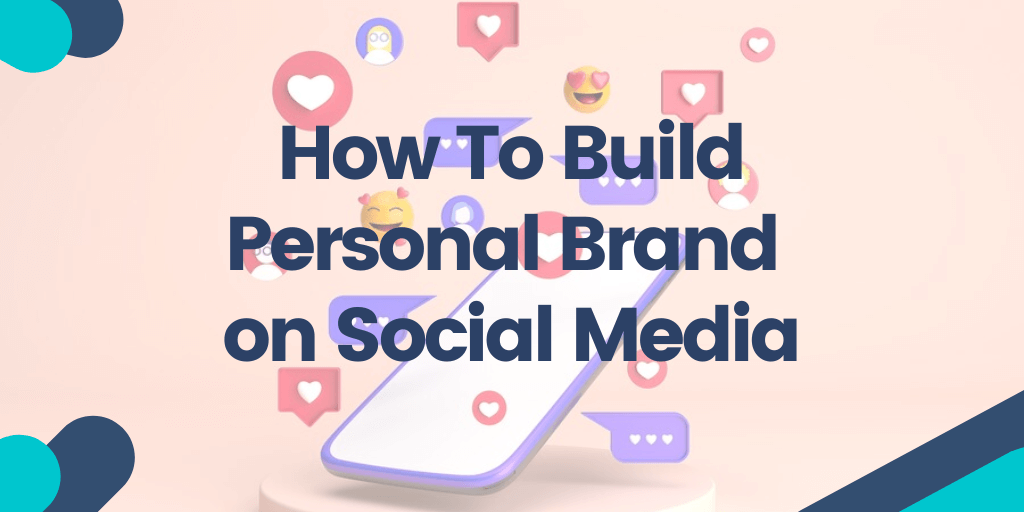Through the years, personal branding has emerged as a perfect way to establish credibility and authority in Personal branding has evolved into a vital tool for establishing credibility in the digital space. It's no longer just for celebrities or businesses, individuals can now cultivate a strong personal brand to engage and captivate their audience effectively.
Regardless, many still don't understand that personal branding is not only about content creation and following marketing strategies. It is even more about knowing “who” you are, “what” you want to achieve, and “how” you do this in your own way.
If you want to uncover, convey, and manage your personal brand but it sounds like quite a large task, read this guide. By following these 7 steps, you will learn how to build a powerful personal brand that attracts the target audience and opens up opportunities that would have passed you by.
Content
- Stick to your identity
- Focus on the right social network
- Optimize your profile information
- Create a consistent brand experience
- Publish valuable content
- Grow your brand awareness
- Learn to love data
1. Stick to your identity
One of the most crucial steps in building your personal brand is to uncover your personality and find a unique style that resonates with your audience. This process often involves community building, as it helps you connect authentically with others who share your values and interests.
Also, remember that once you develop your distinctive style guide, moving away from it is hardly ever a smart idea.
Another thing to pay attention to is not to make a mistake of trying to be someone else and sharing core values that you don't relate with. Your brand identity should really reflect your personality. Whether you are funny, revolutionist, or tender, stay true to yourself.
Let's look at Lady Gaga, whose personal brand makes her audience feel accepted, understood, and a part of something important. With all her exclusive content and social media activity, she says to the world: “Love yourself, free yourself, be whoever you want to be.”
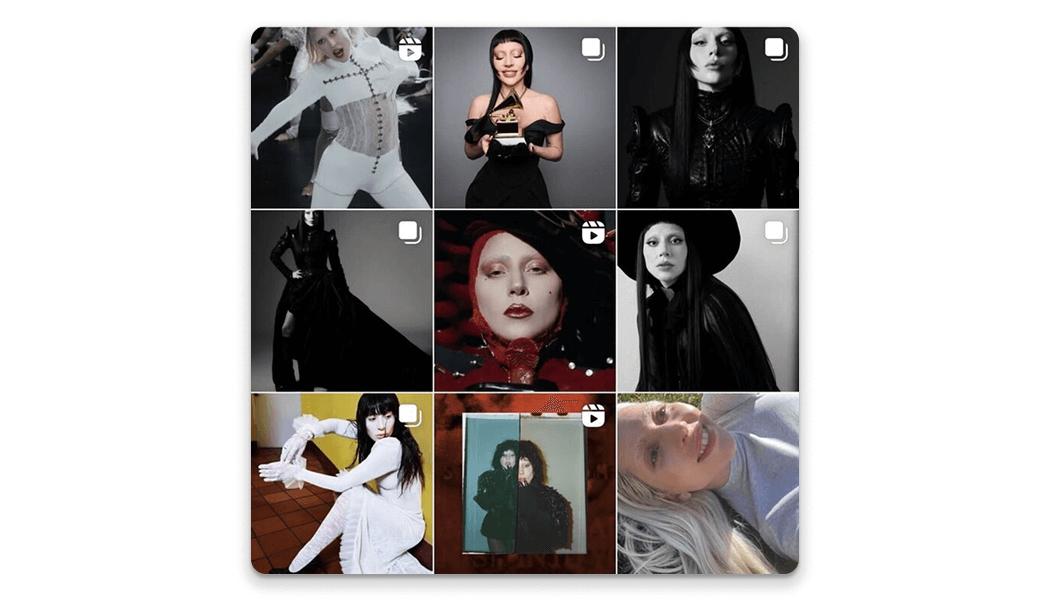
source: Lady Gaga's account
When working on your brand identity, consider these three things:
- When working on your brand identity, consider these three things:
- Every piece of content should let people know exactly who you are and what you do. Ideally, they should understand immediately how you can help them achieve what they want.
- People often choose to do business with those who are similar to them on an emotional level. That's why it is important to provide them with the reason why you do what you do and what you stand for.
- Come up with personal brand statement that will be associated with you and help you touch others' hearts. For example, you are likely to recognize the phrase “Just do it!” as Nike's slogan.
2. Focus on the right social network
Every social network has its own audience. And each user has their own expectations for the content they want to see on the platform. If you choose to post the same things in each and every network, you might be wasting a lot of time. Content that went well on Facebook may perform much worse on Instagram.
Since every social media is different, we want to cover the five most used platforms separately. So what to post on Instagram, Facebook, YouTube, Pinterest, LinkedIn?
Each social network has a unique audience and specific content expectations. Posting the same material across all platforms may waste time, as what works on Facebook might not perform well on Instagram. Since every social media is different, we want to cover the five most used platforms separately. So what to post on Instagram, Facebook, YouTube, Pinterest, LinkedIn?
Instagram users, primarily youth and teens, value aesthetic quality. Opt for high-resolution images and videos instead of just selfies. Share product photos, behind-the-scenes content, user-generated social posts, and more. If you're short on time or resources, consider using stock photo websites.
For a more polished and cohesive presence, partnering with branded content production companies can help create visually compelling, professionally crafted content that aligns with your brand identity and resonates strongly with your Instagram audience.
Let’s look at the following person branding example. This is an Instagram account of a top NY photographer from Ukraine.
Considering the fact that weddings are usually associated with beautiful pictures of a groom and bride, and there are many young people present on Instagram, such a choice of a social platform makes a lot of sense.

source: Ivash's account
Basically, Facebook works well for versatile audiences. Both freelancers, entrepreneurs, bloggers, young, and older people have profiles on this platform. Here, you can share your news, updates, blog posts and repost other high-quality content from third-party pages and websites. Mix educational and entertaining posts.
Video and live video have also proven to be the best types of visual content on this social media platform. For instance, according to statistics, video content has a higher average engagement than pictures and links on Facebook.
In the example below, you can see a profile of an influential athlete, Danny MacAskill. He has a YouTube channel as well, but since he primarily focuses on short stunt videos, Facebook works better for him (over 500K YouTube subscribers vs. 1.7M followers on Facebook).
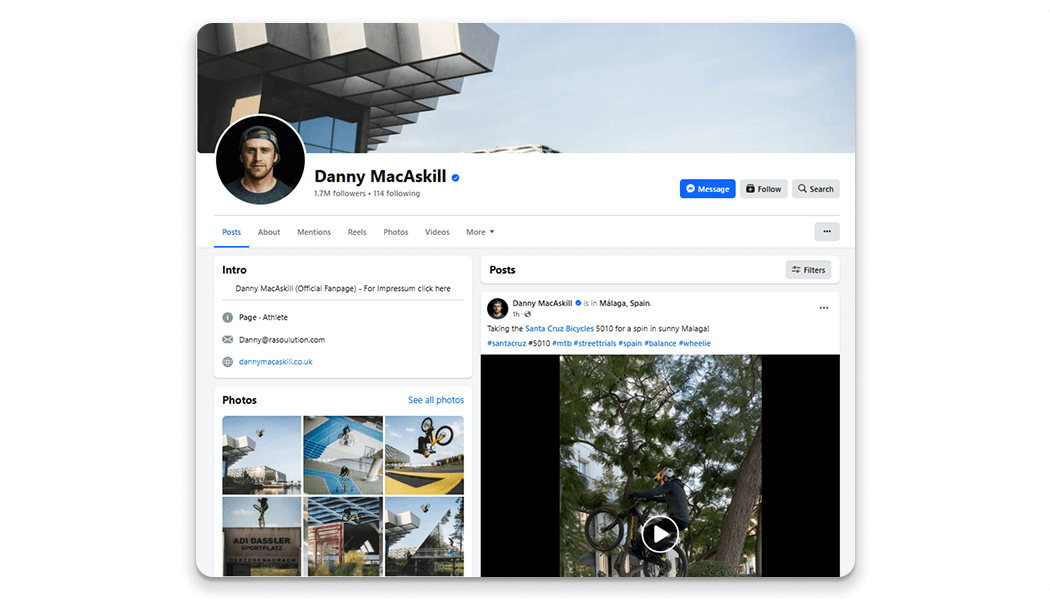
source: Danny MacAskill's account
YouTube
YouTube is a massive search engine for various content like tutorials, DIYs, and product reviews. For businesses, consider uploading brand videos showcasing your products/services, educational content, live sessions with influencers, and customer video testimonials. Alternatively, explore Vimeo OTT alternatives for a diverse range of features and monetization options.
Let's look at Sadia Badei with her brand called Pick Up Limes. Being a professional dietician with a passion for vegan cooking, she utilizes all benefits of YouTube to build her personal brand and spread the word about veganism. Currently, she has over 3M subscribers on her channel.
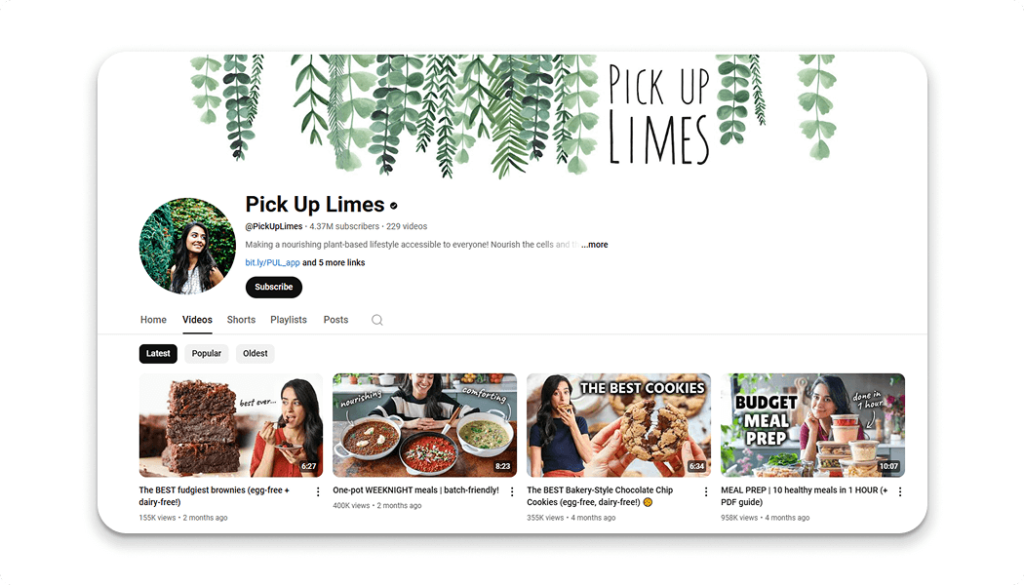
source: Pick Up Limes channel
As LinkedIn is primarily a platform for professionals, the most relevant content for this networking site revolves around job listings, career information, and insights that enhance your professional life. However, there are lots of online communities where people exchange their experiences and valuable information (such as research, industry trends, etc.).
LinkedIn is a professional network where discussing business is key. To engage users, share helpful methods, favorite tools, or personal success stories, like “How I grew my blog from 0 to 10K in 2 months.”
Look at Neil Patel. Every marketer knows him as a top influencer on the web. On his LinkedIn, he is continuously sharing valuable content growing his brand.
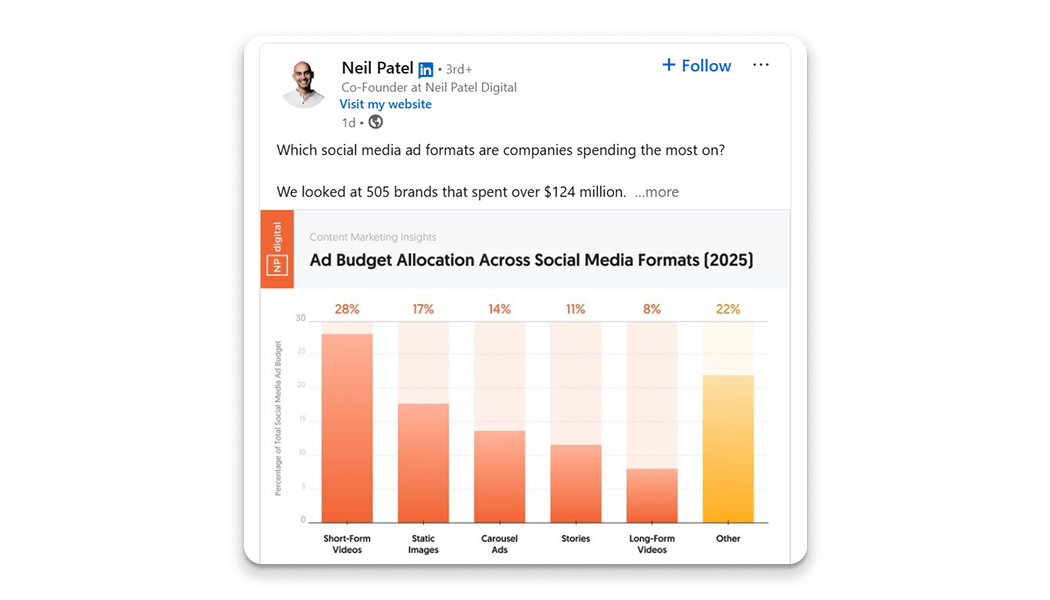
source: Neil Patel's account
Like Instagram, Pinterest is a visual platform. So beautiful pictures are the best thing to post here. However, unlike Instagram, images on Pinterest are mostly vertical. This layout makes the platform work well for vertical images and infographics.

source: Anh Co Tran's account
3. Optimize your profile information
Make it easy for your audience to find and engage with you on social media. Use a recognizable username, upload a consistent profile picture across all channels, write a clear bio, and include a strong call to action.
For example, Gary Varenchuk's Facebook showcases organized information with his easy-to-find real name, contact details, and an engaging bio that attracts followers. His consistent profile picture reinforces his personal brand.
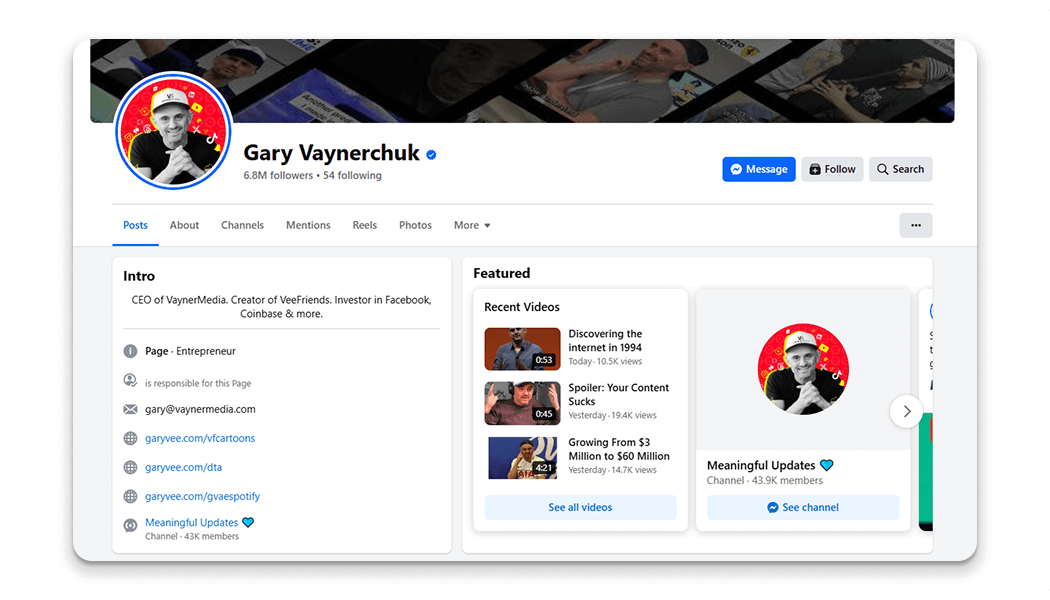
source: Gary Vaynerchuk account
Another great example is Maddie Lymburner with her Instagram project “Madfit.” The fitness trainer filled in all the essential information such as her area of expertise, name, a link to her personal account, and a call to action “Workout with me.” Furthermore, she has an attractive profile picture and a lot of highlights such as “Inspiration,” “Home workout,” “30-day challenge,” etc. This gives Instagram users a clear idea of who she is and what they will get if they follow her.
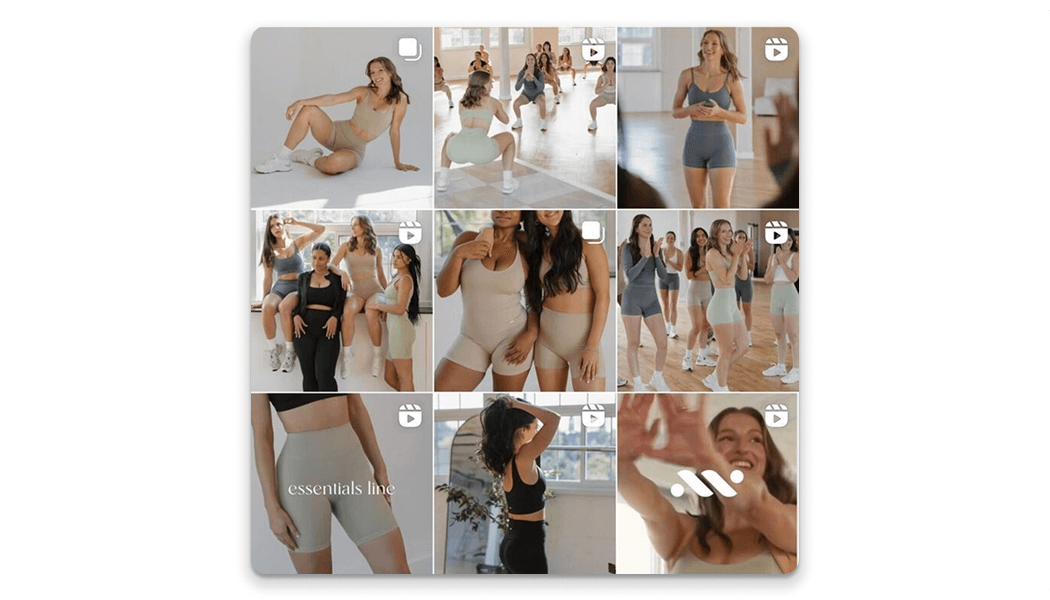
source: Maddie Lymburner's account
4. Create a consistent brand experience
Replicate your style across all social media channels by using a consistent tone and uniform vocabulary, punctuation, formatting, fonts, and color palette. This consistency will help followers associate the style with your brand identity. For instance, a blogger uses pink, white, and light green as her brand colors, applying them consistently on her website and social media networks, often wearing these colors in her videos.
Her background images, Instagram highlights, website buttons, logos, eBook covers are all on-brand as well.
A profile photo is the same on every social media channel.
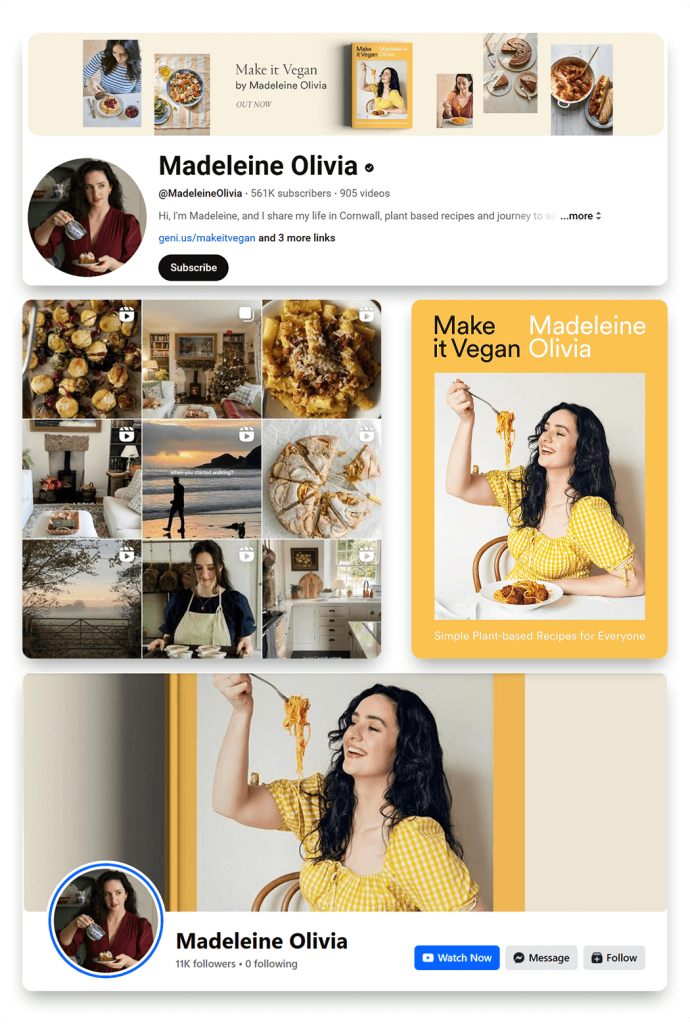
source: Madeleine Olivia's accounts
5. Publish valuable content
Before you start creating any social content, think about why anyone would want to interact with it. If you provide core value, people engage easier. Bear in mind that the content you create must be worthy of being acted on. It has to resolve a particular issue, improve your reader's daily life or make something better. If it can't do any of these, no one will care about it. The value you provide could be humor, some valuable insights, or even knowledge about what fruits are the best to buy depending on a season and can easily schedule them using social media scheduling tools to maintain the consistency. It's all up to your area of expertise and passion.
Here are several things to consider:
- Do your research. Firstly, you will be able to find out what interests your audience the most. Secondly, you probably know that people trust numbers and facts. If you don't know where to start, check Udemy and Amazon (books section). These are the places where people go to pay for knowledge.
- Evoke emotion. Content that evokes emotional reactions is more likely to catch people's attention. Such emotions include happiness, anger, wonder, anxiety, sadness, and more.
- Share practically useful tips. Content that is useful in a practical way has high chances of being acted on.
- Work on headlines. While your topic itself is super important, your headline can make or break how your content does. Use a specific number in your title (if it makes sense), add brackets, put the most important information first. For example, “25 amazing free SEO tools (updated in 2023).”
- Use visuals but not too many. Images can make your content much more compelling. However, if you feel that photos don't match your content, you can always consider using infographics, diagrams, or screenshots.
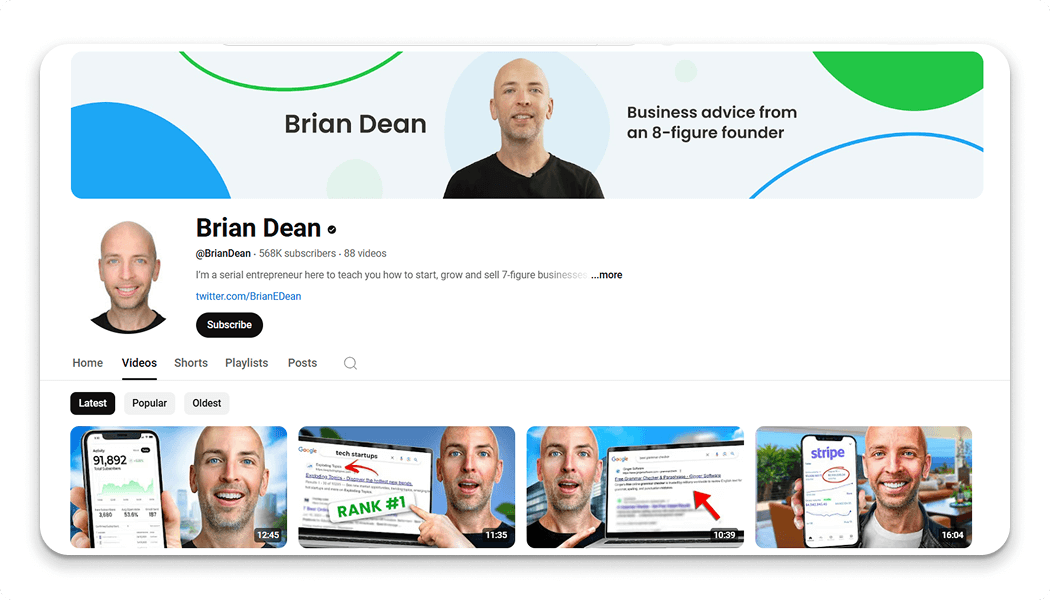
source: Brian Dean's channel
6. Grow your brand awareness
Your personal brand will have little influence if you don't gather a loyal fanbase around you. To grow faster, you can do the following:
- Invest in ads
Paid promotion is essential in social media marketing, increasing brand awareness and profits. Set a budget and target audience for your ads. Start small to gauge ROI and boost online discussions about your brand. The aim is for people to recognize your personal brand and understand its benefits.
- Find partnership opportunities
Try to recall your high school days when relationships often solidified your place in the social hierarchy.
Being friends with the "popular" crowd earns respect, similar to business dynamics. Associations with well-known individuals enhance your personal brand's perception. Companies showcase famous clients to reach a wider audience and enhance their credibility. Seek partnership opportunities by attending events, engaging in social media groups, speaking at niche conferences, guest blogging, and collaborating with influencers.
- Promote via email
Although many of your customers and prospects hang out on social media, they don't always see all your posts. When it comes to content promotion, email crushes social media. So even if you heard that email was dead, know that it isn't. Not even close. Every time you send an email, you have an excellent opportunity to grow your brand.
When you post something new, you can send out a little plain-text newsletter to your email list to let people know that they can go already to your website or social media and enjoy your new content.
Pro tip: Maximize email effectiveness using your email signature. Along with your photo, logo, and contact info, include social media links. Optimize these links by adding a compelling call-to-action button encouraging recipients to explore your offerings. See the example of email signatures for consistent branding below.
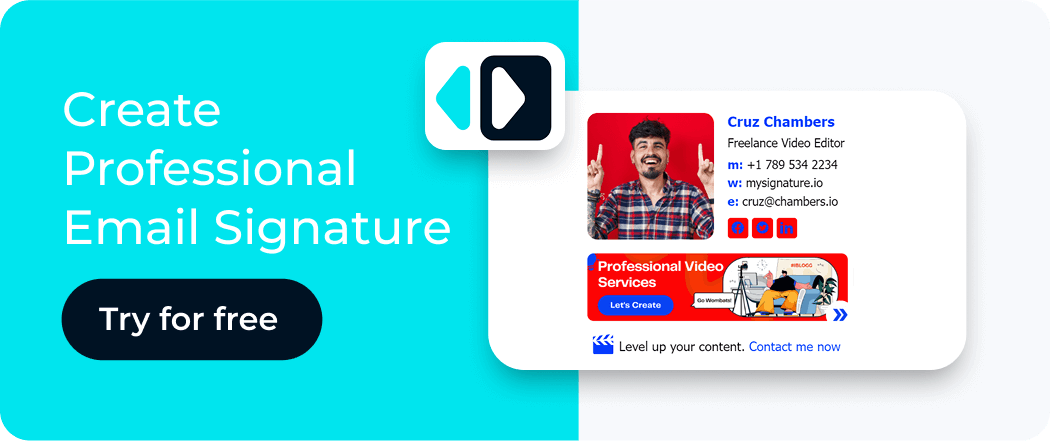
Check out our Email Signature Guide to learn how to promote your personal brand through email communication.
You might also like: How to Create HTML Email Signature to Boost Your Personal Brand
7. Learn to love data
Six essential personal branding tips are behind. And many people stop here, but there is one vital thing you can't ignore if you want to grow and succeed – analytics. It's important to track and monitor social media metrics because they can show how successful your campaign is.
Every social network has its own analytics for you to dive into. For example, for Facebook, it's the Insights tab. On YouTube, you navigate to YouTube Analytics. When it comes to Instagram and Pinterest, you will need to switch to business accounts before you can access your data.
Let's take Instagram statistics as an example to learn how to analyze some basic metrics.
You can view insights from your profile in the Instagram app by tapping the “Insights” button.
Image 1: Accounts reached
These insights display the number of unique Instagram users that have seen your content at least once.
Note that reach is different from impressions. The last may include multiple views of your posts, stories, IGTV video by the same accounts.
Account activity measures the number of actions that took place on your account (profile visits, website taps, email/ text button taps).
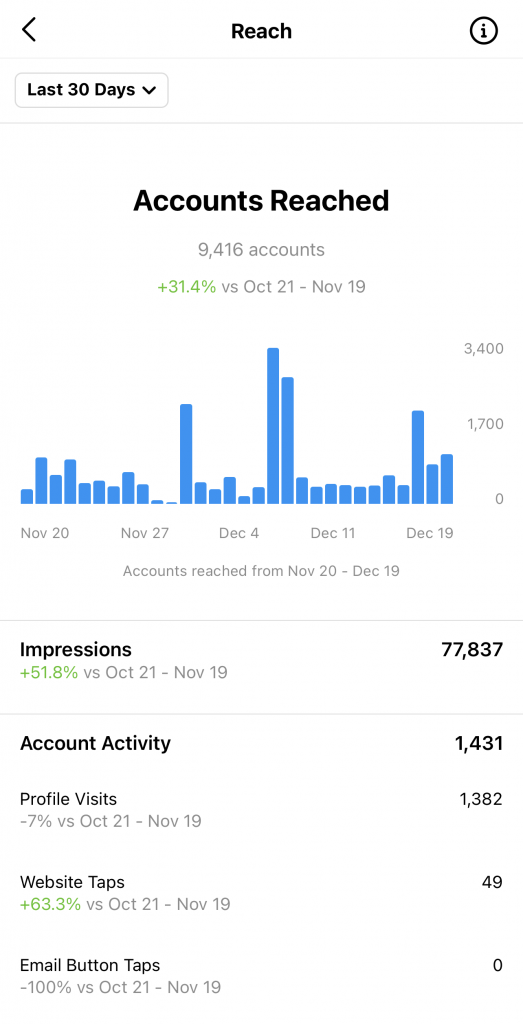
Image 2: Content Interactions
This section displays the number of your post, story, and IGTV content interactions. Statistics include the number of likes, comments, saves, shares, and stories replies.
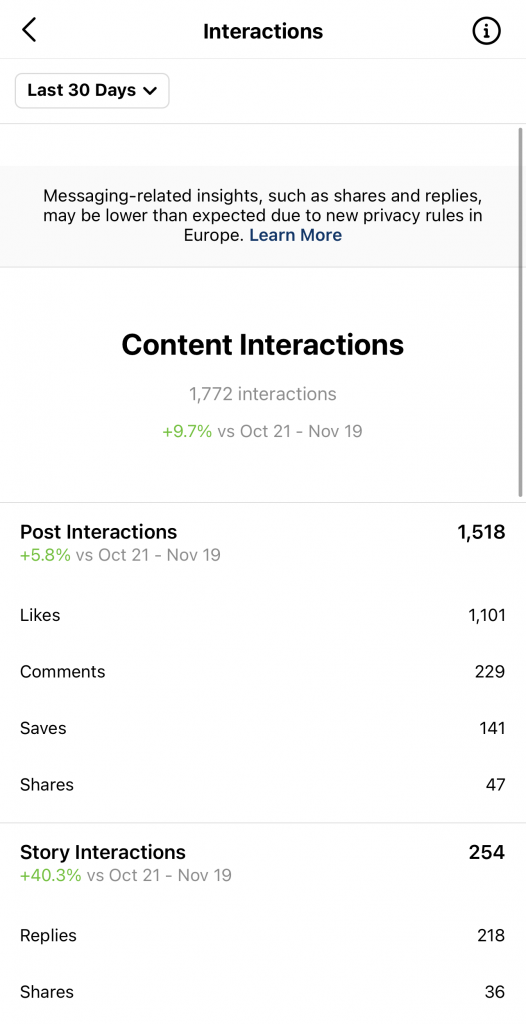
Image 3: Follower Breakdown
On this page, you can see the number of users that followed you minus the number of accounts that unfollowed you. On top of that, here you can find the age distribution of your followers, location, gender, and their most active times (days, hours).

These are just basic insights. You can dive deeper and explore statistics for individual posts or stories. For example, you can find out how many people see your content and where they find it (hashtags, homepage, etc.), how many users started following you after seeing your specific post/story, how many shared your post/story, how many tapped the sticker, and so on.
Analyze your metrics on a consistent basis and track your progress toward the goals you set previously. The goals may include brand awareness, content distribution, lead generation, and more.
So, if your goal was to increase brand awareness, then potential metrics to keep an eye on can be the reach of your social media posts to see how many users you reach each day/week/month; followers count – to find out if your content is relevant for the selected target audience; mentions and shares – to see how many users are talking about your brand or sharing your content with others.
Conclusion
There is no doubt that social media platforms can and do allow us to build personal brands that result in greater professional opportunities. In this guide, we share with you seven essential steps that will help.
Just to sum it all up:
Step 1: Stick to your identity. Be who you are;
Step 2: Find your platform of influence (in can be more than one platform, but you do need a dominant space);
Step 3: Optimize your profile information. People should immediately understand who you are, what you do, and how you can help;
Step 4: Replicate your style across all of your social media channels;
Step 5: Provide the kind of value that will keep your followers loyal to you;
tep 6: Grow brand awareness (paid promotions, cooperations with other influencers, etc.);
Step 7: Learn to analyze your data to be able to adjust your personal social media strategy for better results.
Good luck!

